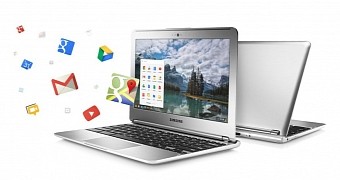Wirelessly charging our smartphone, tablets and smartwatches seems to be the next best thing when it comes to pumping some juice into failing mobile devices. But soon we will able to do the same even for more power-hungry devices such as laptops.
What if we could charge the Chromebooks of the future this way? It appears that this is exactly where we are headed. User basmith7 notes on Reddit that something that looks very much like wireless charging could soon be upon your Toshiba or ASUS Chromebook.
To support his claims, he brings world of a Chromium code commit described as “enable inductive charging” on a board code-named Ryu.
Ryu supports wireless charging
Ryu isn’t in fact the name of some upcoming Chromebook model, but describes a PC board which is currently being tested with an open source version of Chrome OS on top of it.
The commit is tagged with “Sanity check only” which means the board was tested only to confirm if a certain feature worked as intended or not.
But what is inductive charging anyhow? It’s a technique that makes use of electromagnetic fields to transfer energy between devices.
The basic set-up include a base station running on mains power and “receiver” devices which are placed in closed proximity and taking advantage of a frequency “resonant” with the base.
Intel is pushing the wireless charging standard avidly
Wireless charging is pretty hot right now and one of its biggest proponents is chip giant Intel. For example, the processor guru announced that its “smart wireless charging bowl” will be ready to hit the streets in time for the 2014 holiday season.
The bowl, which looks pretty much like your average chip/nut snack bowl, uses resonant charging technology based on the Alliance 4 Wireless Power (A4WP) standard, so users should be able to charge multiple devices simultaneously.
It’s interesting to note, that a piece of paper or some other small object preventing the gadget to touch the bowl, shouldn’t affect the wireless process whatsoever.
Inductive wireless technology has also showed in the Nexus line of Android devices, more specifically in the Nexus 7 (2013) and Nexus 5.
Intel said at some point this year that they plan to remove all cables from computers by the end of 2015 and wireless charging will help achieve this end.
However, even if the intention is there, don’t be getting all super excited just yet. Chromium developers are in the process of testing stuff all the time, but some of these feats never make it into real-life products. On the other hand, wirelessly charging your Chromebook doesn’t sounds so futuristic, does it?

 14 DAY TRIAL //
14 DAY TRIAL //